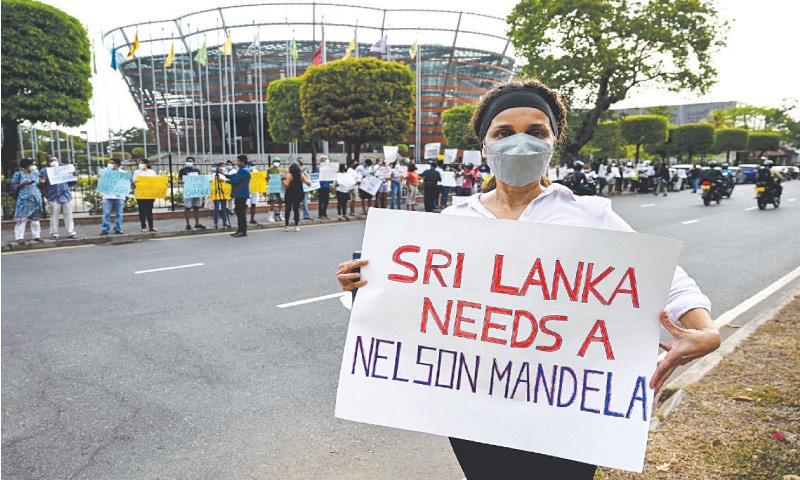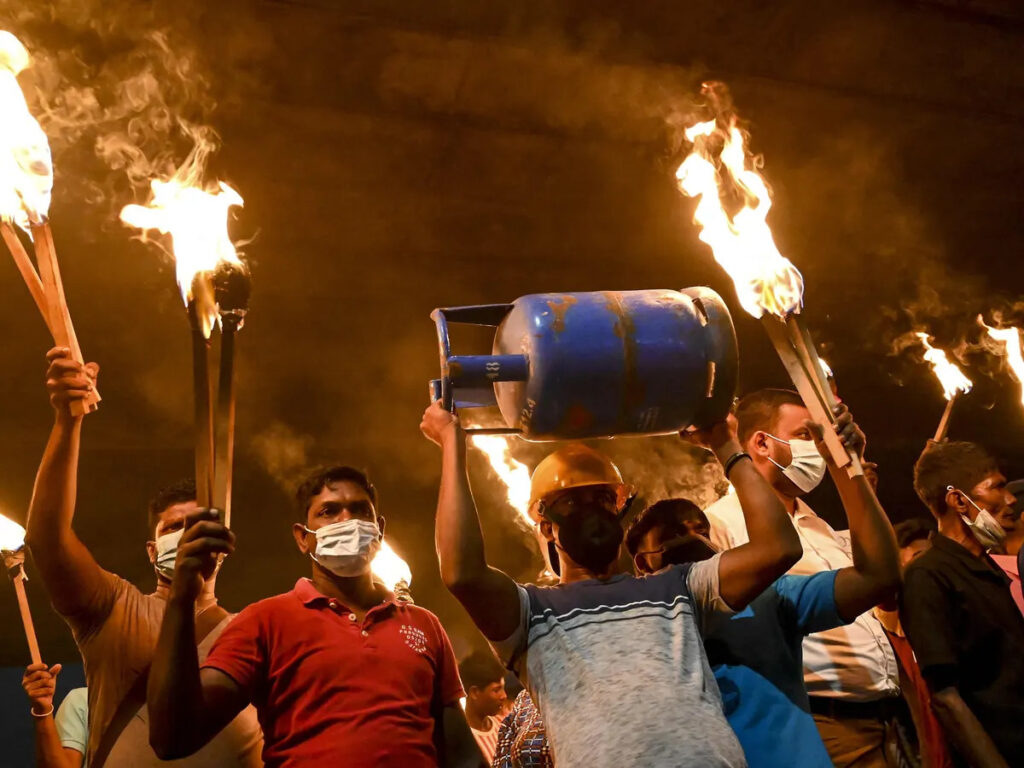Sri Lanka is in the middle of an economic and political crisis. with demonstrators defying curfews and government officials resigning in mass.The worst economic crisis since the South Asian country’s independence in 1948 is fueling unrest, with debilitating inflation pushing the cost of essential items rising.
What caused the decline in the economy?
Experts say the issue has been building for years, spurred by a mix of poor luck and administrative mismanagement.According to Murtaza Jafferjee, chair of the Colombo-based research group Advocate Institute, the Sri Lankan government has borrowed huge sums of money from foreign lenders to pay for public services during the last decade.This deepening recession has occurred with a series of economic setbacks in Sri Lanka, ranging from natural disasters (heavy monsoons) to man-made disasters (a government ban on chemical fertilizers, which wrecked farmers’ harvests).These issues were exacerbated in 2018 when the President’s resignation of the Prime Minister triggered a constitutional crisis when hundreds of people were killed in churches and luxury otels during the Easter explosions in 2019; then from 2020 forward, when the Covid-19 outbreak struck. With a large budget deficit, President Gotabaya Rajapaksa lowered taxes in an attempt to resuscitate the economy, which failed horribly.
However, the strategy backfired, resulting in a reduction in government revenue. Thus, rating agencies degraded Sri Lanka to near-default status, effectively shutting the nation off from international markets.
To pay off government debt, Sri Lanka has relied on its foreign exchange reserves, which fell from $ 6.9 billion in 2018 to $ 2.2 billion this year. Imports of petroleum and other basics were harmed as a result, and prices skyrocketed.
To top it off, the Sri Lankan rupee was the government floated in March, meaning its value is determined by the demand and supply of foreign exchange markets.
This appeared to be a move to devalue the currency in order to Encourage remittances and apply for a loan from the International Monetary Fund (IMF).Ordinary Sri Lankans, on the other hand, were hurt by the rupee’s fall against the US dollar.
What does this mean for the ordinary individual?
Sri Lankans’ everyday life has been converted into a continuous loop of waiting in lines for basic products, many of which are rationed, as a result of the sri lanka economic crisis. In recent weeks, businesses have been forced to close owing to a shortage of electricity to run refrigerators, air conditioners, or fans. Customers queue for hours in the sweltering heat to fill their tanks, and soldiers are stationed at gas stations to keep them calm. Some people have even died as a result of their impatience.

Others claim that the price of bread has more than quadrupled, while auto-rickshaw and taxi drivers claim that the gasoline rations are insufficient to support their livelihoods.
Some people find themselves in an untenable situation:they must work to support their family while simultaneously waiting in line for supplies. Even middle-class families with money are concerned that they would run out of basics such as medication or petrol.
How are the demonstrations going?
Protesters flocked to the streets in late March in Colombo, demanding that the government act and be held accountable.Outside the building, protesters flung stones and lit fires. President’s private house on March 31, ignited public outrage and discontent.
Before imposing a 36-hour curfew, police deployed tear gas and water cannons to disperse the protests.President Rajapaksa was declared a state of national emergency on April 1,authorizing officials to detain people without a warrant and prohibiting the use of social media.Despite the curfew, protests continued the next day, causing police to arrest hundreds more protesters.
So, what did the government have to say about it?
President Rajapaksa made a statement on April 4 that did not mention the resignations explicitly, instead urging all parties to “Together, we must strive for the wellbeing of citizens and future generations.” Several economic issues as well as global developments have played a role. the current sri lanka crisis,” the statement added.

What comes next? Sri Lanka is currently seeking financial assistance from the IMF and is looking to regional nations for assistance. President Rajapaksa stated in his address last month that he had assessed the benefits and drawbacks of cooperating with the IMF and had chosen to seek a bailout from the Washington-based organization, something his administration had been esitant to do.Sri Lanka has also sought aid from China and India, with New Delhi providing a $1 billion credit line in March — although some analysts have cautioned that this assistance might exacerbate rather than resolve the problem.


